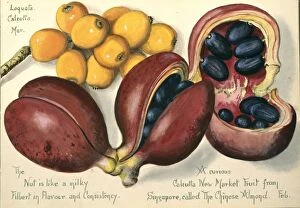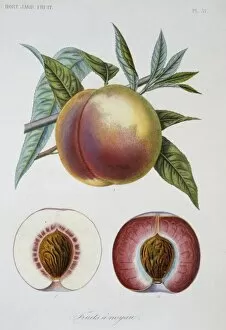Amygdaleae Collection (#3)
"Amygdaleae: A Fascinating World of Insects and Fruits" Step into the enchanting realm of Surinam
For sale as Licensed Images
Choose your image, Select your licence and Download the media
"Amygdaleae: A Fascinating World of Insects and Fruits" Step into the enchanting realm of Surinam, where the Amygdaleae insects thrive amidst a diverse array of Prunus species. From the succulent Prunus sp. Peaches like Grimwoods Royal George or Grosse Mignon to the tangy sour cherries found on Prunus cerasus trees, these tiny creatures have an abundance of delectable options. As they flutter through nature's pantry, they encounter Psittacula cyanocephala, the vibrant plum-headed parakeet, feasting on juicy Prunus persica peaches. The air is filled with sweet fragrances as bees buzz around Flowering Blackthorn or Sloe -Prunus spinosa-, pollinating its delicate blossoms. But it doesn't stop there; it also revel in the lusciousness of various plum varieties from Prunus sp. , including breast of Venus peach and royal peach. Their journey takes them to orchards bursting with both peaches and plums, offering a feast for their discerning palates. Venturing beyond Surinam's borders, these insects discover Organic Wild cherry trees in Allgaeu, Bavaria—prized for their sweetness—and even bird cherry (Prunus padus L. XXV 95) adds a touch of diversity to their diet. Amidst this cornucopia lies a majestic sight—the grandeur of large common whiteheart cherries from Prunus sp. —a true delight for any connoisseur. In this harmonious ecosystem where fruits abound and insects flourish, Amygdaleae play an essential role as pollinators while indulging in nature's bountiful offerings.






















